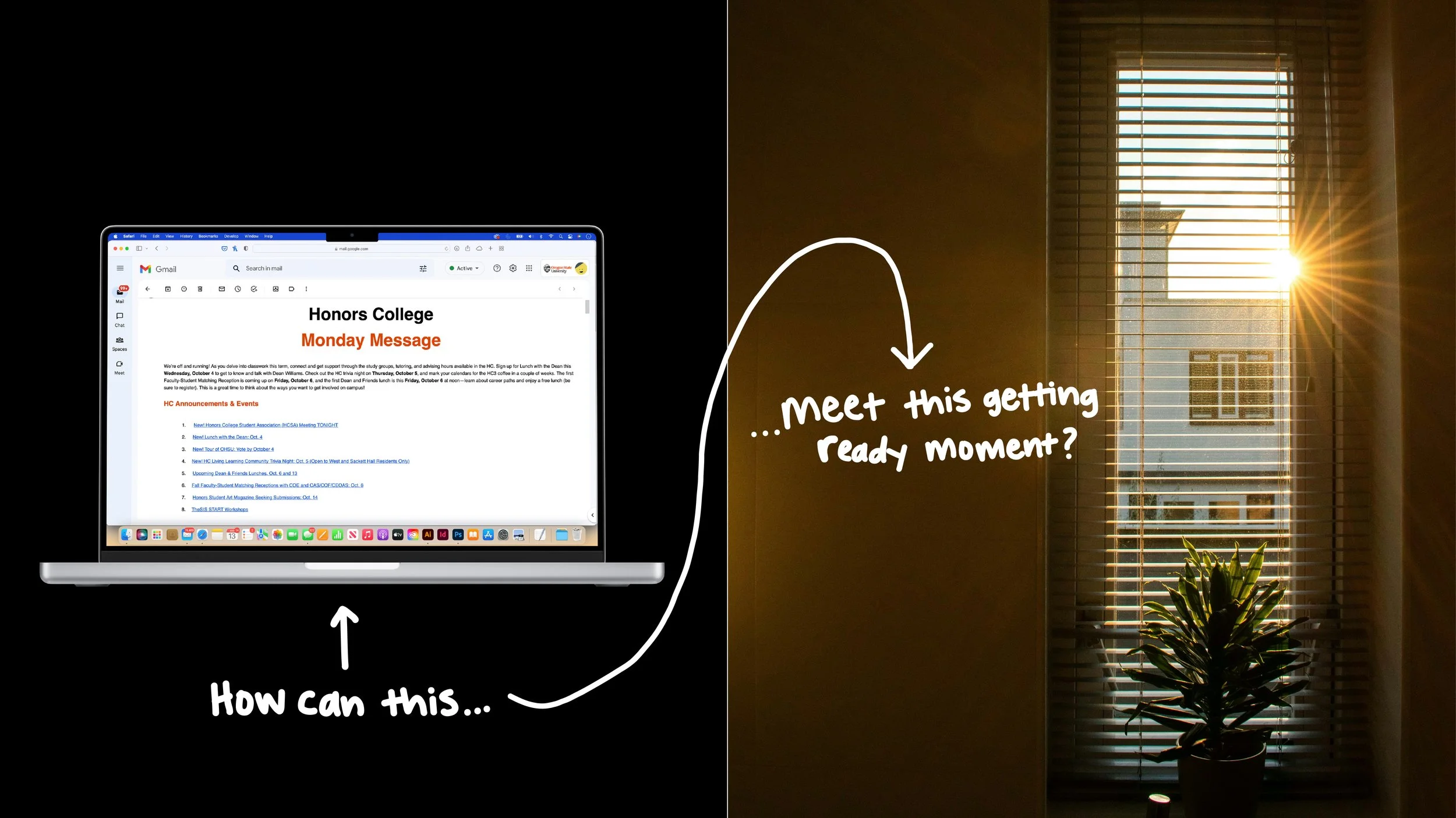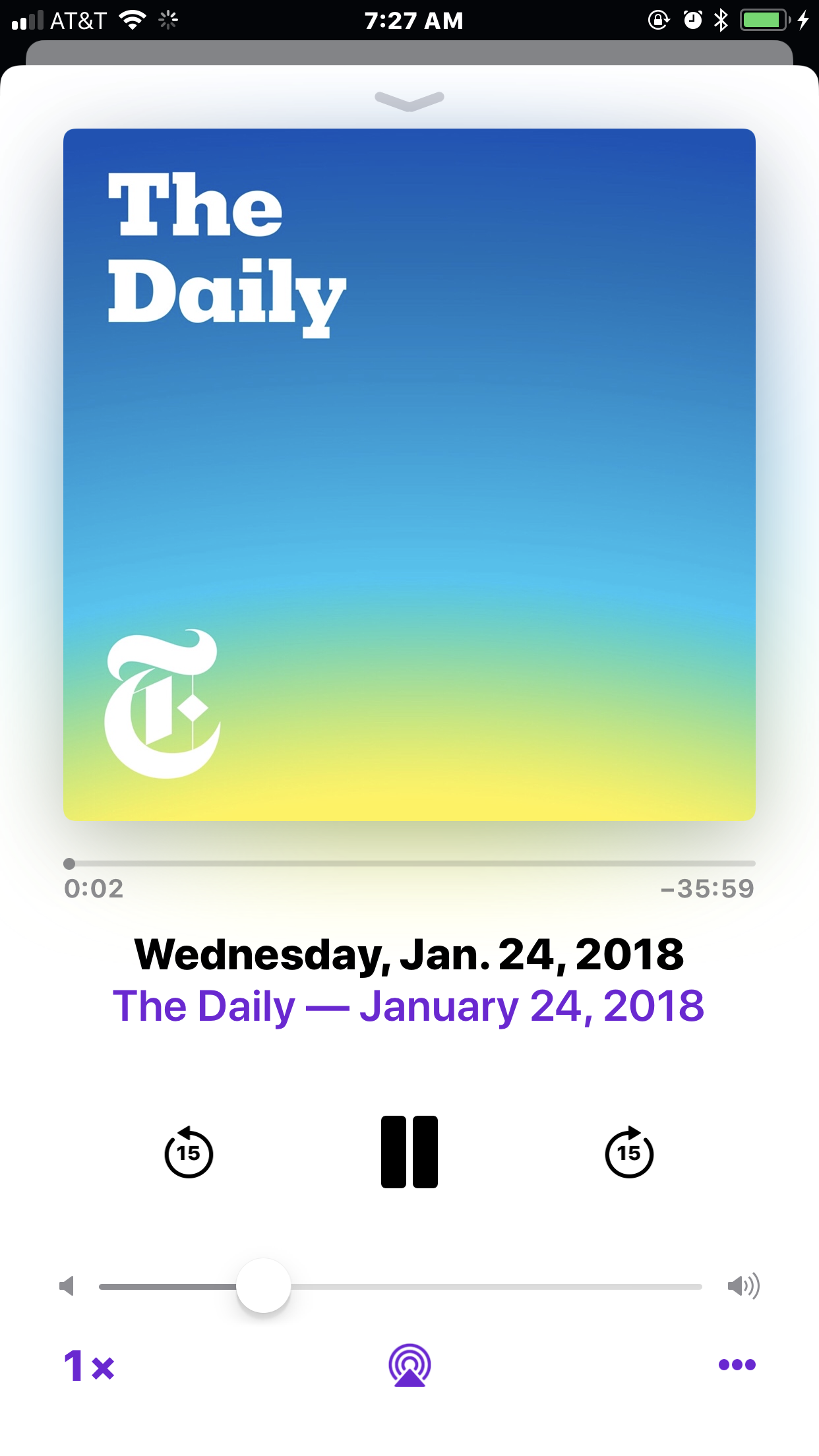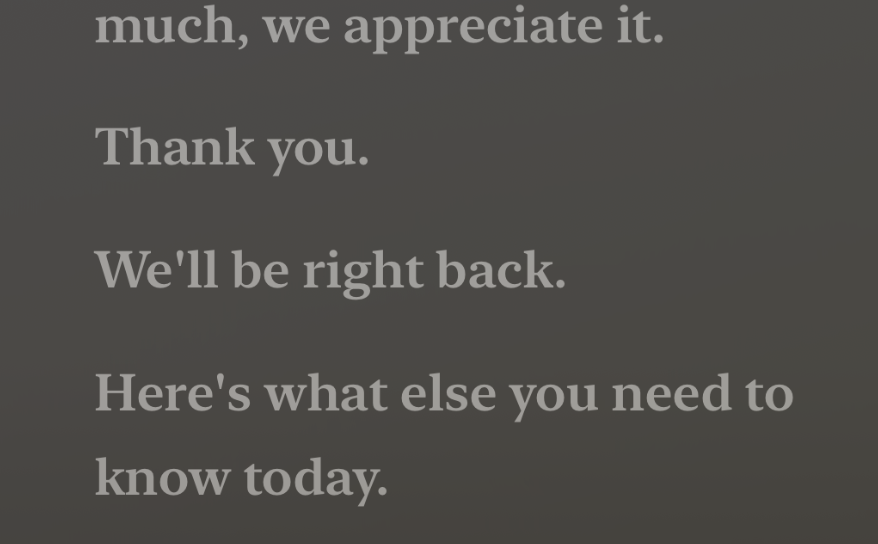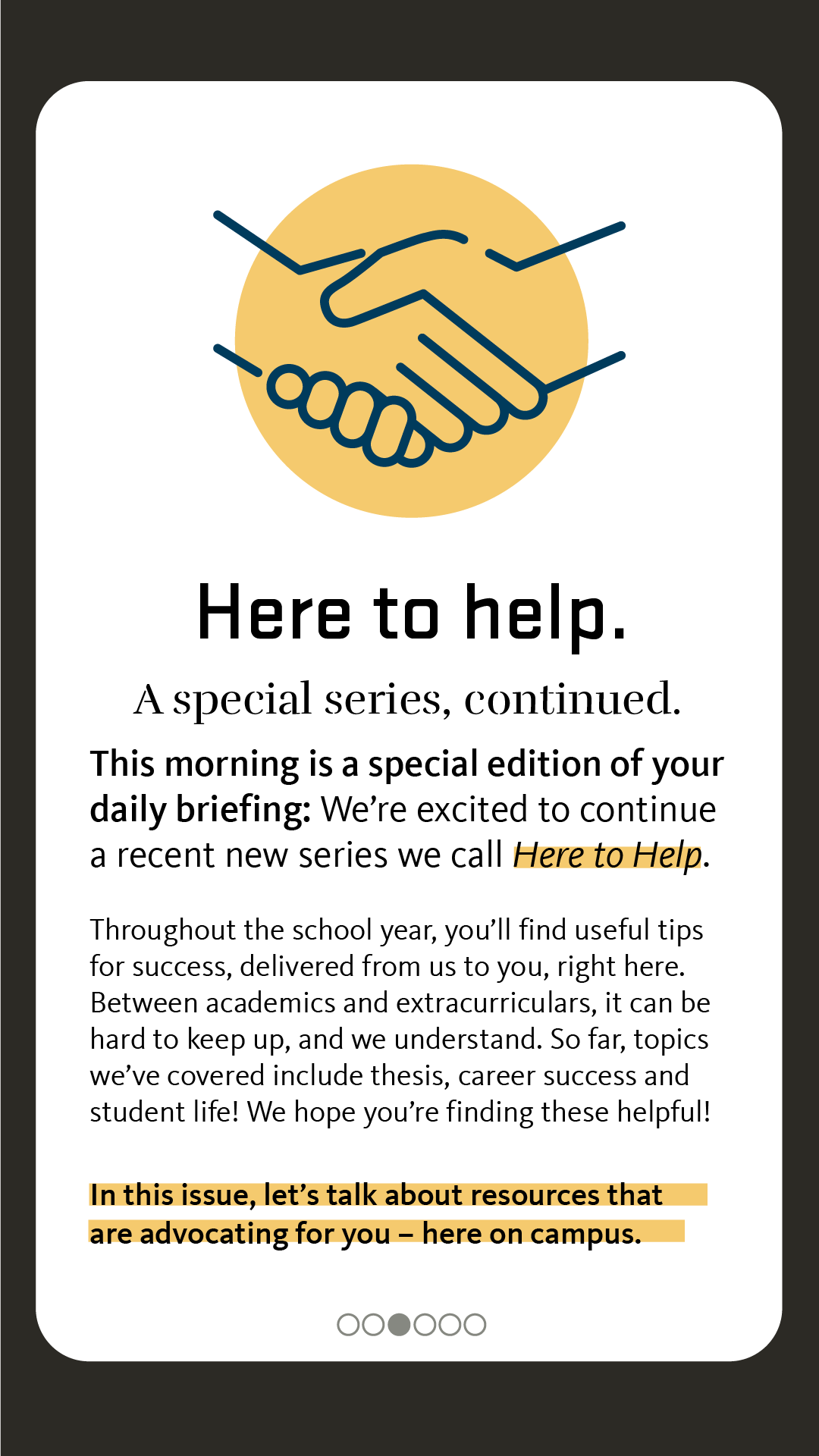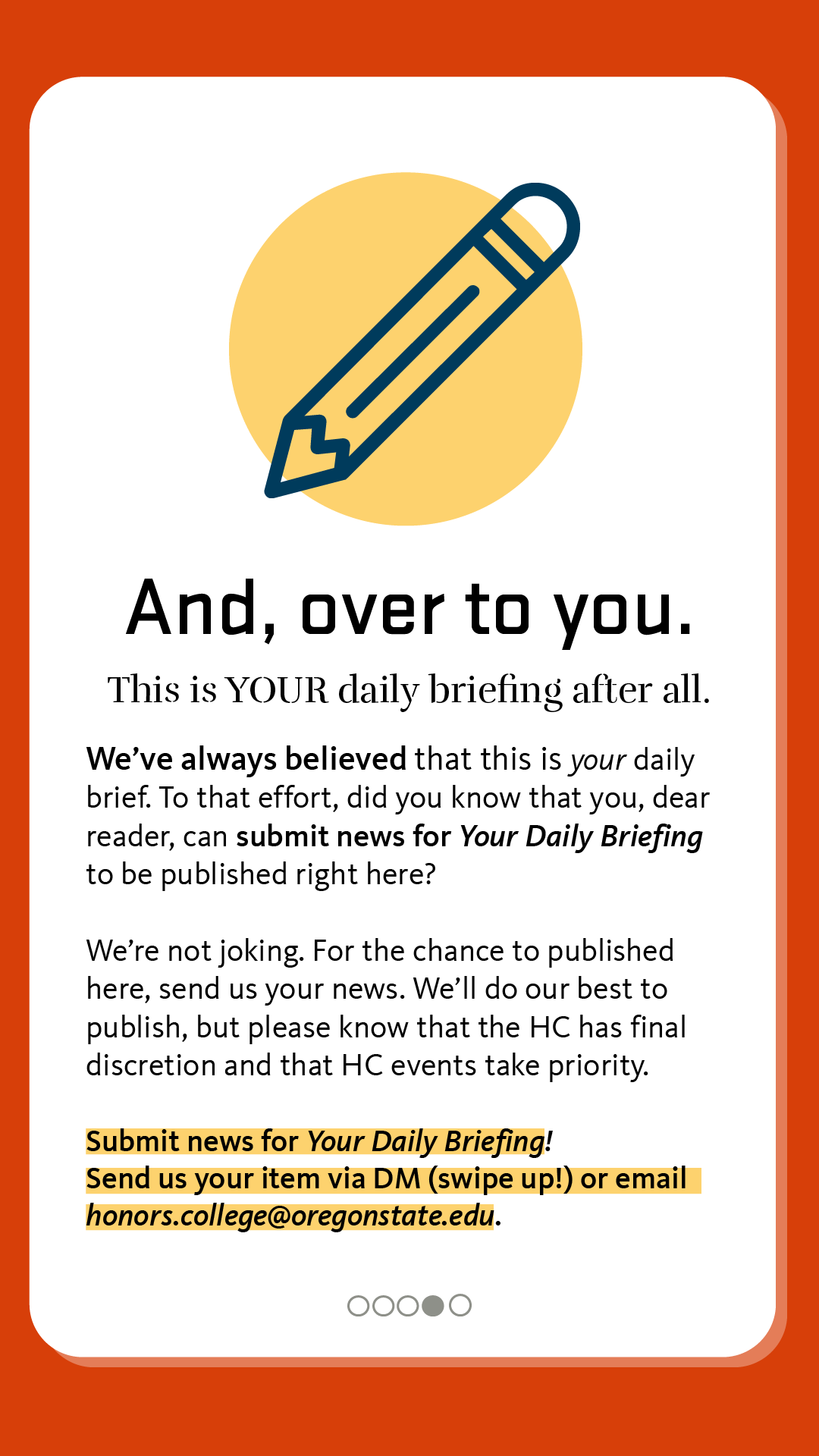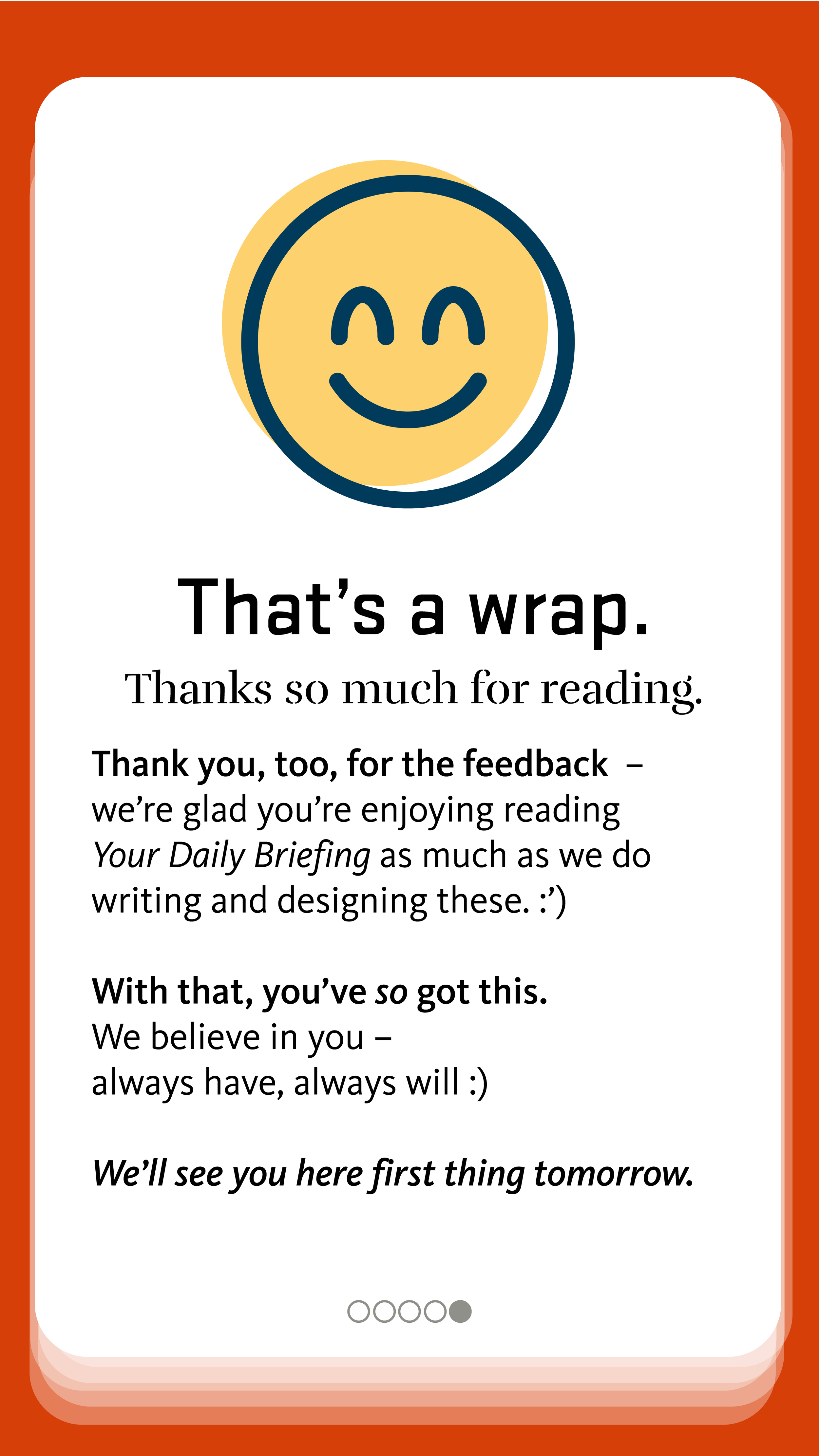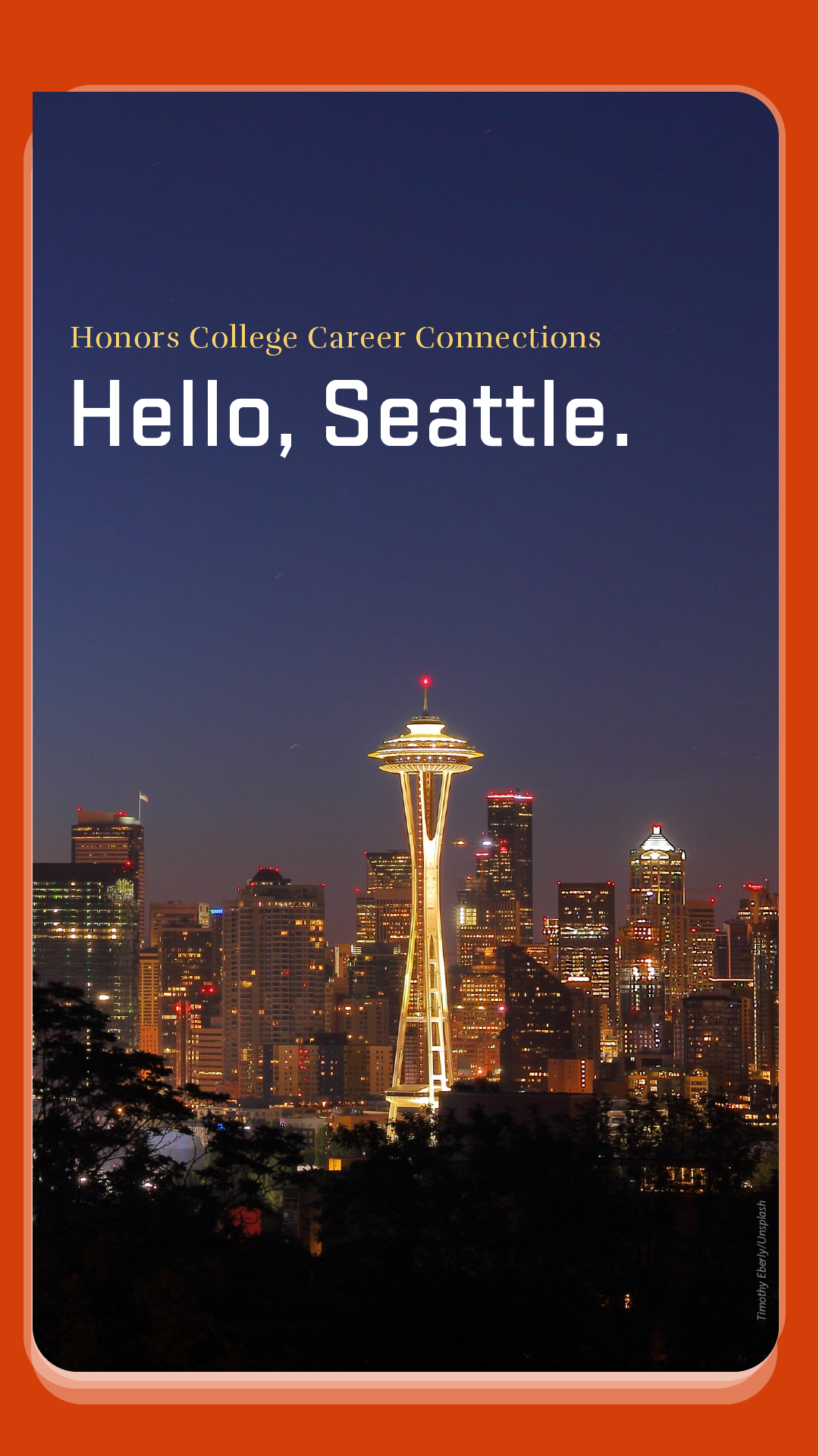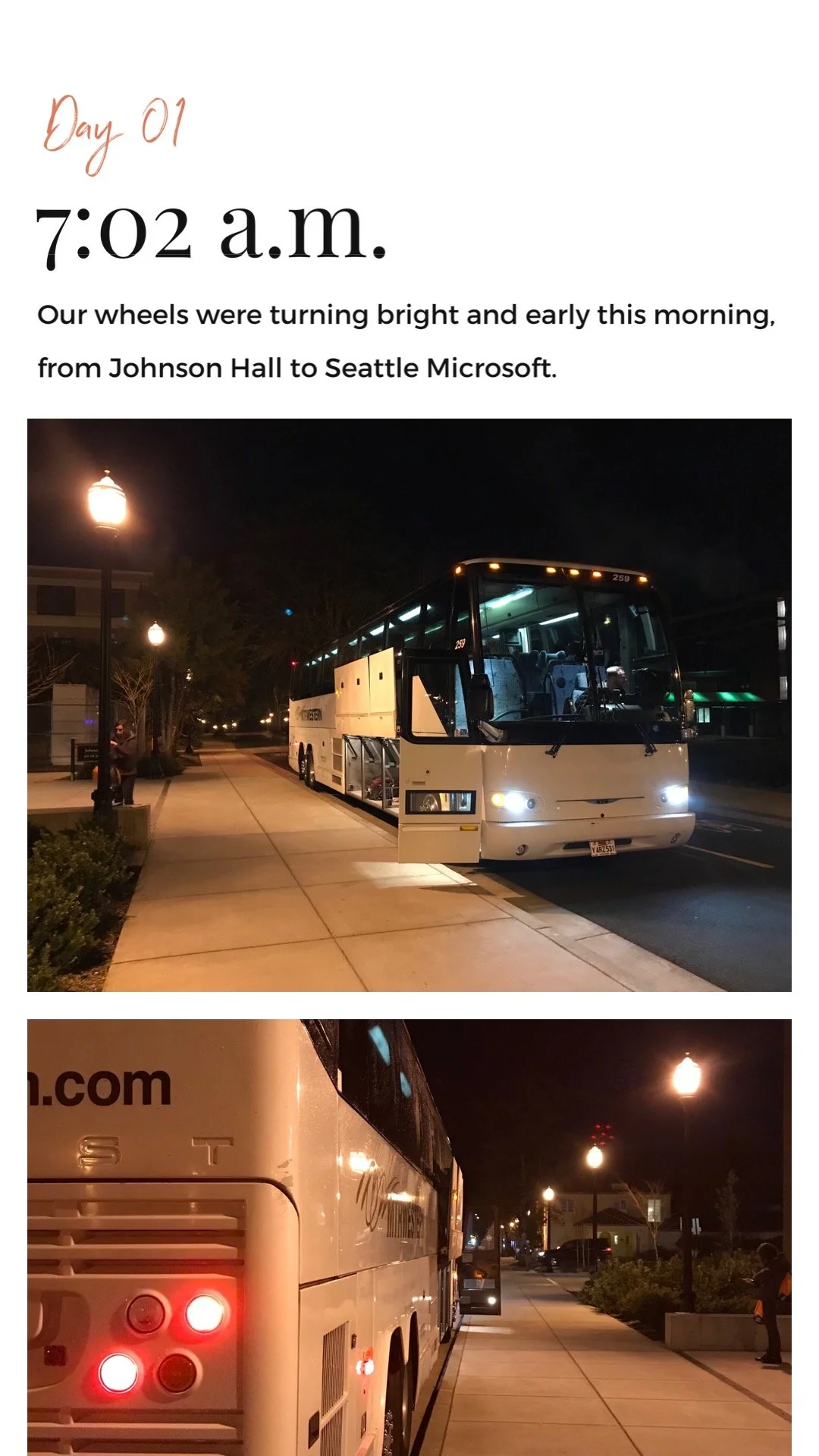
Your Daily Briefing
Design, copy, strategy
Student email inboxes are brimming with announcements vying for attention. “Your Daily Briefing” seeks to rise above the noise: A daily Instagram story highlighting what students need to know from the Oregon State University Honors College as they head out that door.
Newspapers I stumbled upon at the Meow Wolf art experience! One way a briefing is provided.
One morning while listening to “The Daily”, I realized that “The Daily” had become a part of my morning routine. This is exactly what I wanted for Honors College updates!
What does the news even look like?
I began looking for inspiration, eventually finding it in the most unexpected of places: a New York Times podcast. Audio! An intriguing idea, except it was a little unrealistic for a handful of us on the communications team to record and produce a podcast each day.
There was something else, though. I was fascinated by the way The Times’s newest series, “The Daily,” ended with a “here’s what else you need to know today” segment after a deep dive.
That was just the frame I needed.
This line from each episode of the “The Daily” provided a frame for approaching the challenge of breaking down a variety of Honors College news and happenings.
What did my peers think?
Was Instagram the right place to meet students in real time?
In conversations with my peers, I learned that many students simply forgot to sign up for an opportunity or show up for an event. While the weekly email was widely regarded as being informative, it was too easy to fall out of the loop by the middle of the week in the midst of assignments and endless midterms.
Yes! The same year as I was tinkering on a daily Honors College briefing, as a communications team we briefly floated the idea of Snapchat to reach a younger audience. I noticed the research wasn’t supporting the investment to build this non-existent channel for the college. In fact, within eight months of launching, Instagram reported 200 million daily users on Stories↗, compared to 160 million daily users on Snapchat. Students (myself included!) were using Instagram Stories as a way to stay connected, and the use of Stories as a news channel wasn’t there yet.
Iterating an identity
Another priority was giving order to information. These updates could get lost just as easily as an email newsletter, so to make it stick, a clear headline-first hierarchy was necessary.
One piece of feedback I received was that the typography felt distracting. In trying to make information stand out, I had unintentionally introduced too many weights. I went back to the drawing board to simplify how I was using different weights, and for what specific purpose. I also realized that the color palette might be contributing to diminished readability.
I was fascinated with UI elements and taught myself how wayfinding might provide context — even in something as simple as an Instagram Stories daily briefing. Breadcrumbs alongthe bottom offered context and a quick visualization on the length of the day’s briefing; rounded corners brought warmth. Friendly copy built trust, while colors also helped craft an experience and became a way to signal types of updates. My favorite tidbit was the accumulation of cards in the background as another signal to the reader that you were making it further in the daily briefing!
The priority was always to be that friend who knows what’s going on. In addition to the use of highlighting to make skimming and screenshotting information easy, a separate greeting page with the day’s date helped set the tone for the briefing (and honestly, we could all use a reminder!) Regular sections included an inspiration quote to start the morning and a reminder that “hey, we see you, but you’ve got this,” that reinforced the Honors College was genuinely rooting for your success!
One of the neatest aspects of the design system was watching how the daily briefing could adapt to new uses. As word spread across the Honors College community, the daily briefing became a home for regular features, such as resources developed with the Honors College’s Student Engagement team and spotlights on new classes as registration opened. The daily briefing also expanded into live reporting during events. I covered these personally at first, but eventually developed a design that complemented the real-time photography and video shared by the Honors College staff and student ambassador teams.
“Your Daily Briefing” sparked conversations beyond the Honors College community, and importantly, student participation rates increased. What I didn’t expect was how deeply the briefing would resonate beyond current students — we also saw high engagement among families and alumni. I believe a part of this success came from how inviting and responsiveness we were. Because this was before link clicks were widely available on Instagram, we encouraged readers to “swipe up” and send us a thought or inspiring quote. Encouraging direct messages shaped the briefing into a genuine two-way conversation.
One of my first priorities was making sure the daily briefing always carried a sense of weight and empathy. This would be one of the first interactions a student has in their day. Student life can be so stressful at times, so imagine if this interaction felt like a friendly one? “Rise and shine” was born and became the standard greeting for the story. Emoji brought necessary warmth.
↑ 1,000%
increase in Honors College Instagram audience
”Your Daily Briefing” was a large factor in increasing Honors College digital engagement across channels over the course of five years. On most days, some 50-75% of our audience viewed our story. Incredibly, most readers tapped all the way through.
Lessons learned
While Instagram’s Story feature is a powerful way to build relationships with audiences, we need to recognize that a portion of students aren’t on social media regularly. And as I saw while building “Your Daily Briefing,” platforms continue evolving. That presents a slippery slope: Is it ethical to expect students to engage with us when research increasingly shows can be detrimental? If not, how can we translate our success here into another channel, or complement it with an entirely different form of communication?
One possibility is a hybrid experience. For example, when students walk into a Honors College class, could we ask professors to have a daily-brief-style update on the screen?
There are a lot of assets involved in the production of “Your Daily Briefing,” and this process required me to develop a template that was ready for use by any one (and when I graduated!)
As word spread campus, campus communicators reached out to collaborate and learn how I built this. I strongly believe that my student perspective helped shape the voice that became “Your Daily Briefing”. The takeaway is more time spent listening and understanding the people we design for, rather than jumping into the newest medium straightaway.
Intro composite base photograph: Yara/Unsplash
